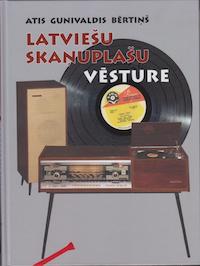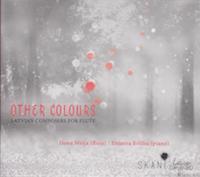Celebrated painter Mark Rothko (born Markus Yakovlevich Rothkowitz in Dvinsk, modern-day Daugavpils, Latvia) painted some of the most memorable and identifiable canvases of the 20th century. With just a few colors and basic shapes, his paintings seem simplistic at first, but reveal a lush and intimate world that is both striking and affecting.
Using the paintings as inspiration, the Māris Briežkalns Quintet, a jazz ensemble from Latvia, has endeavored to translate these paintings into music, with the help of a number of distinguished Latvian composers. The result is the 2016 album Rothko in Jazz, a collection of ten jazz compositions inspired by the works of Rothko.
The Māris Briežkalns Quintet, made up of Māris Briežkalns on drums, Viktors Ritovs on keyboards, Gints Pabērzs on saxophone, Edvīns Ozols on double bass, and Raimonds Macats playing the cello and harmonica, has been performing for more than 10 years. The group describe their sound as having pop-jazz and Latin-jazz accents, and has played around the world and released multiple acclaimed albums.
The group enlisted the help of a wide range of Latvian composers (from established composers like Pēteris Vasks and Raimonds Pauls to younger talents such as Jēkabs Jančevskis) to assist with the project – each composer was given the assignment of taking one Rothko painting and creating a composition based on how the painting inspired the composer.
According to the CD notes, the paintings selected for this project are all from Rothko’s last artistic period, abstract expressionism, and were painted in the period between 1945 and 1968. Though most of the artworks produced during this time were of Rothko’s signature ‘multiform’ style, some of the works still had additional abstract images in them, for example the painting CR#248 (many of his works were untitled, and are identified by number in the booklet) painted in 1945. This painting served as the inspiration for Latvian American composer Lolita Ritmanis’ work ‘Against the Current’. The easy going, flowing work is woven together by Pabērzs’ saxophone, making for a dreamy opening for this collection.
One might not immediately think that composer Pēteris Vasks’ somber, weighty music would translate to a jazz format, however, his work ‘Autumnal’ (painting CR#513, 1954) effectively captures the beauty of nature that one can interpret from the green and the orange in the painting. Being Vasks, the work is a slow, melancholy stroll, accentuated by the deliberate, fateful tones of Ritovs’ piano playing.
Compoer Jēkabs Jančevskis, a rising star in Latvian composition, provides the engaging work ‘Red-and-White’ (1285.69, 1968), which features the slow wail of Macats’ cello, supplemented by Briežkalns’ steady rhythm.
As Rothko grew older, his paintings grew bleaker, such as CR#814 painted in 1969, which inspired Georgs Pelēcis’ work ‘Black and Gray’ (perhaps appropriate, given the composer’s last name, which can be translated as ‘greyblack’). Driven by Briežkalns’ drums and Ozols’ double bass), this wistful work is slightly sentimental and slightly morose, and is an engrossing listen.
The CD comes in a hardback book, with a reproduction of each of the paintings used for inspiration, as well as an image of the first few bars of the sheet music. Still, it would have been interesting to have some comments from the composers themselves about how the paintings inspired them, but perhaps all that can be determined from just listening to the music.
The group has been performing these works worldwide, and will have a concert at the Baryshnikov Arts Center in New York City on May 2, 2018.
Rothko in Jazz collects ten unique musical portraits, presenting the colors and emotions of Rothko’s paintings in music. Though all are by different composers, they form a cohesive whole, a colorful spectrum created from the many individual aspects of Rothko’s works. The Māris Briežkalns Quintet, with their jazz arrangements of the works of an all-star array of Latvian composers, has, in their performances, successfully captured the essence of many of the paintings of Rothko.
For further information, please visit the Māris Briežkalns Quintet Facebook page.
Rothko in Jazz
Māris Briežkalns Quintet
Mūsdienu mūzikas centrs, MMCCD017, 2016
Track listing:
- Against the Current – Lolita Ritmanis
- Love’s Theme – Ēriks Ešenvalds
- Memories Landscape – Rihards Dubra
- Yellow-and-Red – Artūrs Maskats
- Autumnal – Rudenīgi
- Red-and-White – Jēkabas Jančevskis
- Waltz – Vilnis Šmidbergs
- Two in Three – Jēkabs Nīmanis
- Black and Gray – Georgs Pelēcis
- Swing of Dvinsk – Raimonds Pauls
- Rasa
Egils Kaljo is an American-born Latvian from the New York area . Kaljo began listening to Latvian music as soon as he was able to put a record on a record player, and still has old Bellacord 78 rpm records lying around somewhere.





